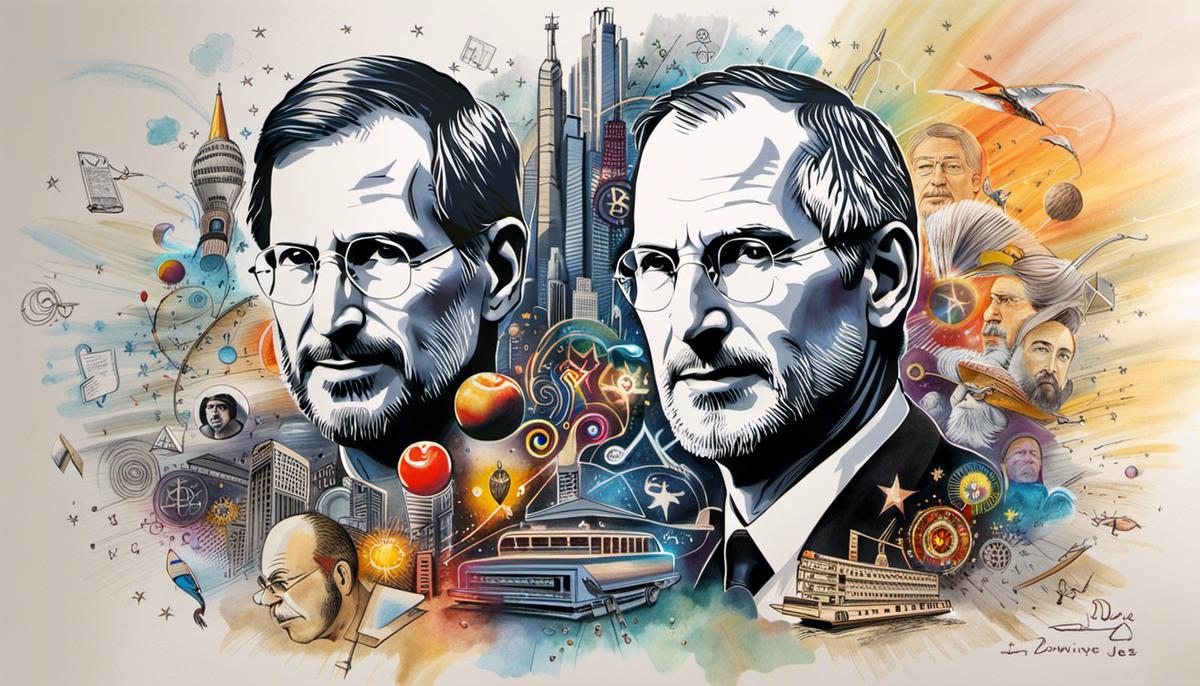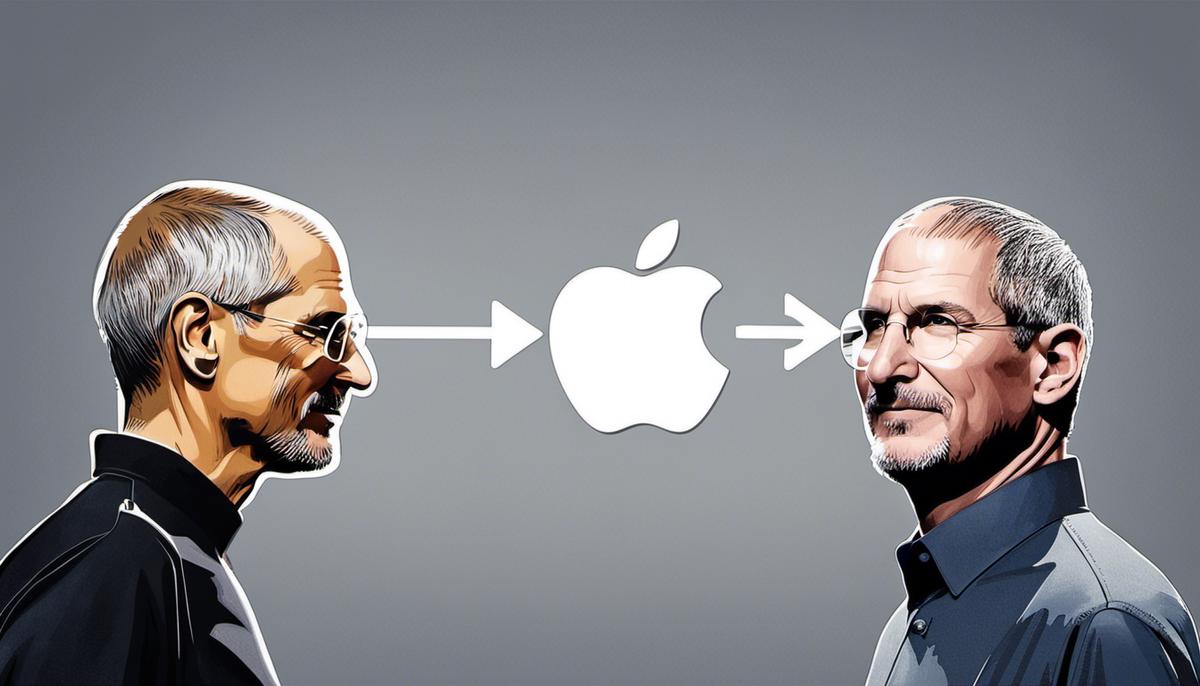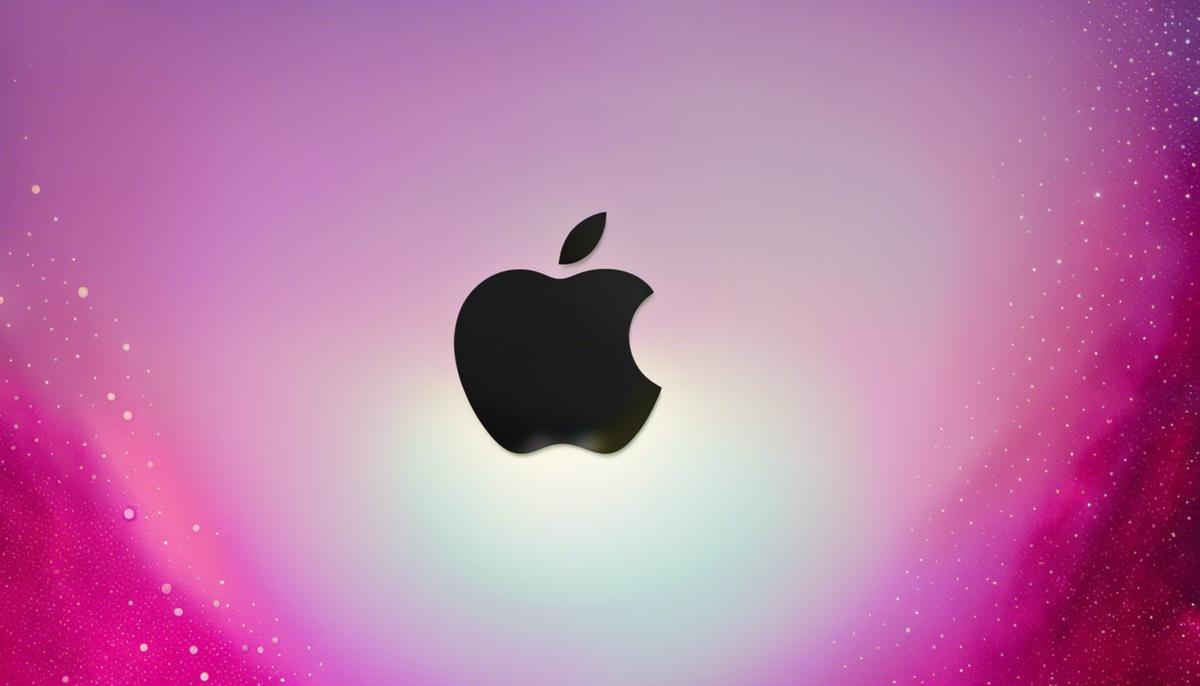Mastering the leadership dynamics that have propelled a company like Apple Inc. to astounding heights is a pursuit worthy of every aspiring leader’s endeavor. At the heart of Apple’s unwavering success is an ingenious vision shaped by its legendary co-founder, Steve Jobs, and upheld by his successors, demonstrating how visionary leadership can birth an institutional legacy. This discourse delves into the multifaceted leadership frameworks utilized at Apple, from the inspirational leadership of Steve Jobs to the steady stewardship of Tim Cook, highlighting their respective impact on the organization’s direction and success. We will also examine the distinct culture and flat structure at Apple, which have cultivated innovation and encouraged risk-taking, offering fundamental insights for today’s leaders and organizations.
The Visionary Leadership of Steve Jobs
Visionary Leadership and Management Style of Steve Jobs
Steve Jobs’ leadership and management style were unique and distinctive. He was known for his ability to imagine and execute on a vision that was far beyond what others could see. Jobs intended to shape the world, not merely adapt to it, and this was evident in every move he made with Apple. His infamous reality distortion field was testament to his convincing ability to push through innovative ideas.
His “do-or-die” mentality was reflected in his management style. He adhered to a binary classification of ‘heroes’ and ‘zeroes’, placing high demands on his employees and accepting nothing but the best. He was heavily involved in the decision-making process, instilling a top-down approach, but with a strong emphasis on absolutely premium quality for any of the company’s products or services.
Drawing a Vision and Standing by it
Having a clear vision, standing by it, and believing in its possibility are some of the leadership lessons from Steve Jobs. He was instrumental in developing the user-friendly design of Apple products and was resolute about his vision to create an integrated, seamless user experience. This led to the development of landmark products like the iPod, iPhone, and iPad. It’s this strength of vision that sets Jobs — and Apple — apart from the rest.
Fostering Innovation and Creativity
Steve Jobs was relentless in his pursuit of innovation and creativity. He used to say, “Innovation distinguishes between a leader and a follower”. Jobs encouraged his team to think beyond the conventional and to create products that were unique and revolutionary. He built an ecosystem that fostered an environment of innovation, encouraged taking risks, and was intolerant of mediocrity.
The Art of Decision-making
Another important lesson from Jobs’ leadership tenure at Apple, is his decision-making process. Jobs demonstrated that sometimes instinct trumps data, showing how crucial it is for a leader to trust their gut feelings and make swift decisions. While this approach might be considered risky, it paid off for Jobs and Apple on numerous occasions, most notably when launching the iPhone.
Building a Quality Driven Culture
Timeless lessons can be gleaned from Jobs’ insistence on perfection. He was known for being extremely detail-oriented – a trait that trickled down to his workforce. He firmly believed that the quality of a company’s products or services reflects the company’s values, and thus he built a company that sought perfection in every aspect – from product development to customer service.
To Conclude
Steve Jobs was a remarkable innovator and leader who taught us the fruitfulness of dreaming big and backing those dreams with unwavering determination and strength. His unique approach to leadership has shaped an era defined by innovation, quality, and vision. This imprint he has left, through his time at Apple, continues to offer invaluable lessons and inspires leaders across various sectors around the globe.

Apple’s Leadership Succession: From Jobs to Cook
The Role of Leadership: From Steve Jobs to Tim Cook
Reflecting on Apple’s massive trajectory, a successful leadership change— from visionary founder Steve Jobs to current CEO Tim Cook—serves as a guidepost to leadership transitions. Although both embodied unique leadership styles, their combined charisma, work ethic, and attention to detail honored the organization’s core values and shaped an employee-centric culture.
The Essential Differences and Shared Traits in Leadership Approaches
Jobs, noted for his direct involvement and fostering an entrepreneurial spirit, brought a unique flair to Apple’s operations, while Cook, a methodical and well-balanced leader, focused on operational efficiency. Despite diverse approaches, the overlapping dedication to Apple’s ideology was apparent, paving the way for future success.
Navigating Forward: Sustaining Success Through Major Leadership Changes
Apple’s ability to continue thriving amidst major leadership change can be attributed to Cook’s active nurturing and embrace of the Jobs legacy. Ensuring a balance between innovation and operational excellence, Cook ensured Apple’s continued growth and financial triumph.
Taking Notes: Key Learnings from Apple’s Leadership Transition
Apple’s leadership evolution presents useful takeaways for leaders anticipating a transition. An effective leader does not simply replicate his predecessor but reinvents the role while preserving the company’s values and culture. They must articulate their vision effectively and demonstrate practical patience. This, as exemplified by Cook, allows for steady business growth even in turbulent times.
By studying Apple’s leadership handover from Steve Jobs to Tim Cook, leaders can gain a deeper understanding of the intricate dynamics of a successful transition, which isn’t solely about individual skills but about a harmonious blend of preserving legacy, upholding values, clear communication, and consistent performance.

Organizational Structure & Culture at Apple
The Power of Organizational Structure: How Apple Leveraged a Flat Structure
Apple’s successful innovations can be largely attributed to its flat organizational structure that streamlines decision-making and problem-solving. At the heart of this structure is a reduced hierarchy that encourages open communication between executives and employees, fostering an environment ripe for creativity.
Leaders, therefore, must champion open dialogue, serve as role models, and continually foster an environment of innovation to realize an organization’s broader objectives. Further underlining the importance of a flat structure, Apple provides a textbook example of how reduced layers of management can bolster communication, decision-making speed, and ground-breaking ideas for successful business outcomes.
Shaping Apple’s Distinctive Corporate Culture
At Apple, the corporate culture is driven by an unwavering commitment to innovation, excellence, and simplicity. This blend of strong values creates a culture of secrecy and a sense of belonging among Apple employees, who are often referred to as “Apple’s most significant ideas”. The type of leaders who thrive in Apple’s culture are those who are innovation-driven, maintain high standards for their work, and excel in their ability to simplify complex ideas into easily understandable concepts.
Under Steve Jobs, Apple’s mercurial co-founder, the emphasis was on the innovative culture, with his passion for innovation entrenched deeply in the company. His brand of leadership entailed maintaining an intense focus on the company’s core business while sagaciously pushing for innovation through direct supervision. Current CEO, Tim Cook, has since adopted a more collaborative style, yet he remains committed to preserving the distinctive corporate culture, albeit with his focus on operational efficiency.
Leadership Roles in Maintaining the Apple Culture
Leaders at Apple play a crucial role in maintaining the company’s culture and structure that are geared toward innovation. Leaders are expected to show exemplary traits in teamwork, agility, and a willingness to accept and implement changes, which are all critical elements in ensuring Apple’s continued success.
Apple’s leadership plays a significant role in ensuring that the company’s unique and distinct culture permeates all levels of the organization. They lead by example and emphasize the company’s core cultural elements of innovation, excellence, and simplicity to ensure these traits are emulated throughout the entire organization.
Gleaning Leadership Insights from Apple
Apple’s leadership blueprint offers remarkable insights that can be leveraged by organizations across the spectrum. A notable aspect is the alignment of corporate structure and culture with the strategic objectives of the business. Apple’s emphasis on a flat organizational structure and fostering innovation has nurtured an environment that propels employees to break the mold and think outside the box.
Furthermore, the manifestation of robust, transformative leadership showcased by the likes of Jobs and Cook cannot be underestimated. These leaders are not merely strategic visionaries, but they effectively inspire and motivate their teams as well. They foster a workspace that promotes transparency, collaboration, and a shared dedication towards innovation.
In conclusion, studying Apple’s triumphant business paradigm emphasizes the need for a strong relationship between an organization’s structure, culture, and brand identity. When these three components are harmoniously aligned and underpinned by effective leadership, companies can spur innovation, establish their unique identity in the market, and secure long-term dominance. These lessons from Apple are valuable guideposts for businesses striving to embed a similar culture in their organizations.

Innovation and Risk-Taking: A Key to Apple’s Leadership
Innovation: The Cornerstone of Apple’s Triumphant Journey
The triumph of Apple Inc. is deeply rooted in its ceaseless pursuit of innovation. The company has relentlessly risen above tradition and redefined the contours of the technology sector. Under the stewardship of visionary leaders like Steve Jobs and his successor Tim Cook, Apple has displayed an extraordinary ability to predict consumer trends and deliver offerings that not merely satisfy but frequently exceed consumer expectations.
Lessons in Fostering Innovation
One key lesson is creating a culture of innovation. Steve Jobs, Apple co-founder, advocated for a workplace environment where creativity and innovation could thrive, famously saying, “Innovation distinguishes between a leader and a follower.” This spirit of innovation permeates all aspects of Apple, from product development to marketing strategies.
Another lesson is embracing different perspectives. Apple believes diversity drives innovation, so it actively promotes a wide range of voices and ideas within the company. This allows for out-of-the-box thinking and encourages the development of revolutionary products and services.
Risk-Taking as a Driver of Growth
Apple’s risk-taking propensity has also been instrumental in its meteoric growth. The company has consistently pushed the boundaries, refusing to follow industry norms, and charting its own course. Apple’s decision to develop the first user-friendly personal computer, the Macintosh, was a high-risk, high-reward venture. Despite initial sales not meeting expectations, the Macintosh laid the foundation for future products like the iPhone and iPad. This confidence in taking calculated risks that disrupt conventional norms demonstrates the company’s leadership prowess.
Managing Risks in Pursuit of Innovation
When it comes to managing risks, Apple’s leadership has demonstrated a clear vision. Recognizing that not all risks will lead to successful outcomes, the company has ensured that it has the resources to absorb failures. Apple also invests heavily in protecting its intellectual property, thereby guarding its innovative ideas and products.
Equally important is the company’s strategic approach to risk-taking. Apple does not simply jump on every trend or novelty that emerges in the tech industry. Instead, the company carefully analyzes the potential upsides and downsides and makes informed decisions.
Apple’s approach to innovation and risk management provides valuable takeaways for leaders.
It underlines the importance of fostering a culture of innovation, the power of diversity in sparking creativity, the need for calculated risk-taking to drive growth, and the strategic approach to managing risks. Any leader or organization aspiring to achieve greatness can learn and apply these lessons from Apple’s success story.

There is no one-size-fits-all solution to leadership, as aptly demonstrated by the leadership transitions and evolutions within Apple. Jobs and Cook, despite varying styles and strategies, both implemented leadership paradigms that propelled Apple to its current lofty status. The vibrant culture and structure that have been meticulously nurtured within the organization provide a blueprint for fostering creativity, innovation, and risk-taking. As gleaned from these insights into Apple’s unique approach, effective leadership is a blend of vision, adaptability, and a profound understanding of an organization’s strengths and opportunities. Driven by such leadership, businesses can carve their unique paths, innovate continually and achieve enduring success in an ever-evolving world.
